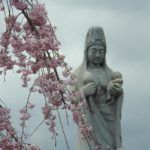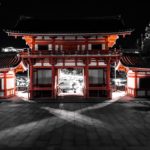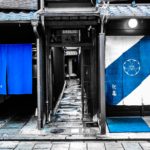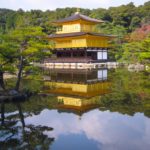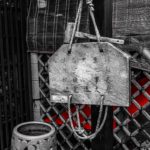the world of Kintsugi – pottery restoration techniques
Crack! Even the most beloved pottery and ceramics cannot escape its “destiny” and may eventually get chipped or cracked. But what do you do with the broken pieces? Well, in Japan, there is a restoration technique called Kintsugi to help. Kintsugi is a method of pottery repair, filling gaps, chips and cracks with lacquer, followed by an application of a, primarily, gold accent colour.

Using the Kintsugi method, the pottery becomes even more beautiful despite being chipped or broken. To discover more about the charms of Kintsugi, I visited “SHITSUGEISYA HEIAN-DO” near the DAIKOKU-JI Temple complex in northern Kyoto City. This studio workshop is owned and run by Mr. Hirokawa, an artisan who works on Kintsugi and other lacquer-related restoration work. Mr. Hirokawa has worked on many restoration projects for Buddhist temples and Shinto Shrines. He has set up a business specialising in Kintsugi repair work for pottery, lacquerware and other historical objects. He also runs workshops for Kintsugi and gold leaf decoration experience in his studio.

According to Mr.Hirokawa, “In Europe, restoration techniques are well respected when it comes to repairing cathedrals and paintings. However, the objective is essentially to cover up damage, whereas in the Kintsugi style of repair, the restoration is visible. Patterns are added but the original form of the piece is hardly disrupted. Because of this, people from overseas find Kintsugi to be a whole new concept.” He holds a firm belief that Kintsugi gives new life to broken objects, and that Kintsugi is a bridge between the past and the future.

His tools include brushes made of animal hair, and sometimes human hair. Tools come in various shapes depending on their purpose.

A type of mask used for Noh performance. Noh is a classical theatrical performing art that originated in medieval times and its chief characteristic is the use of masks. In this case, the repair is in white, not gold.
ature-controlled drying cupboard used to dry lacquer. It’s called a “muro”. Temperature and humidity are maintained within certain ranges.

Kintsugi workshop with Ms.Fujita, assistant to Mr.Hirokawa. Workshop participants often come from overseas.

Gold leaf decoration workshops are also offered. After drawing patterns with fresh lacquer, a piece of gold leaf is placed on top. Once peeled off, the pattern becomes covered in gold.

Kintsugi is but one technique using lacquer. There are a variety of lacquer wares displayed in the studio’s shop. Mr.Hirokawa sources and uses only the best high-quality domestic lacquer. He is extremely grateful to the lacquer farmers of Japan.
The core of Kintsugi is quite simple, which is love objects by not wasting. Due to materially rich life and the development of nuclear family, this spirituality is getting lost. After all, Kintsugi is a collage of the spirituality and the aesthetics where people find something imperfect beautiful. Kintsugi is encompassed with the essence of Japanese Art. To discover Japan/Kyoto deeper, this place, Shitugeisha Heiando, is a must to visit while you are around Kyoto.

TEL 075-334-5012
ADDRESS 14 Murasakino Monzen-cho, Kita-ku, Kyoto
OPEN 10am-6pm
CLOSED Wed.
PRICE From 1,000 yen for small things like incense, from 8,000 yen for Kintsugi repaired items
WEB https://shitsugeisya.jimdo.com/
Workshops Reservation is required. Please email: heiando@outlook.jp
In order to incorporate the Kintsugi workshop on to your customised tour, see Private custom tour.

